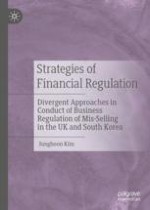2020 | OriginalPaper | Chapter
4. Private Enforcement of COB
Author : Junghoon Kim
Published in: Strategies of Financial Regulation
Publisher: Springer Singapore
Activate our intelligent search to find suitable subject content or patents.
Select sections of text to find matching patents with Artificial Intelligence. powered by
Select sections of text to find additional relevant content using AI-assisted search. powered by
